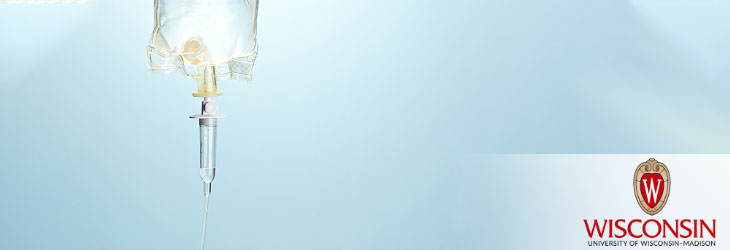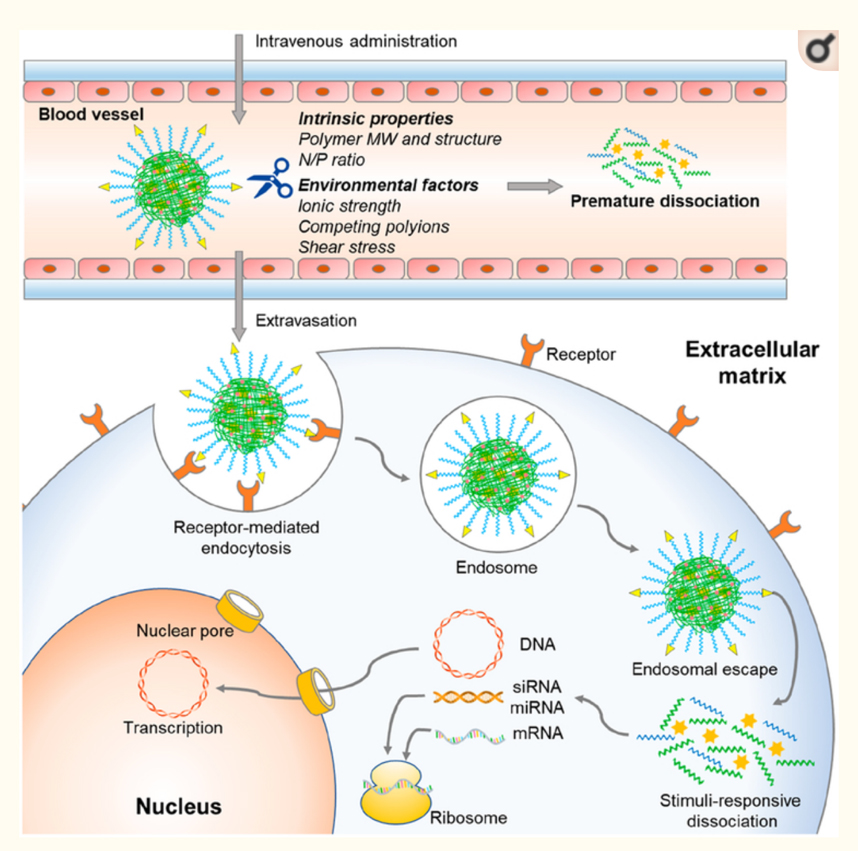Drug Delivery

Nanocapsule Delivery System For Ribonucleoproteins
WARF: P170376US02
Inventors: Shaoqin Gong, Krishanu Saha, Guojun Chen, Amr Abdeen, Yuyuan Wang, Ruosen Xie
The Wisconsin Alumni Research Foundation (WARF) is seeking commercial partners interested in developing improved methods for cellular delivery of ribonucleoproteins (RNP). A new biodegradable nanocoating surrounding the sgRNA/Cas9 RNP complex supports efficient delivery into cells.
Overview
With the explosion of interest in using the CRISPR/Cas9 system for gene editing, there is a strong focus on developing tools for delivering the CRISPR machinery safely and efficiently into cells. Existing non-viral strategies may suffer from high cytotoxicity, poor in vivo stability, large particle size, lack of cell/tissue targeting ability, and variable loading of gene editing machinery. These hurdles have created a significant bottleneck, limiting the progress in generating new research tools and new clinical applications for CRISPR/Cas9 gene editing, especially in living organisms.
The Invention
UW–Madison researchers have engineered a biodegradable GSH-responsive nanocoating surrounding the sgRNA/Cas9 RNP complex for efficient delivery into cells. The RNP nanocapsule is a polymeric network synthesized from a mixture of (meth)acrylate monomers, acrylate crosslinkers and acrylate polyethylene glycol (PEG), built around the RNP cargo. The interactions between the RNP and the monomers include electrostatic and hydrophobic interactions and hydrogen bonding. Nanocapsule formation is completed by free radical polymerization.
Each component of this nanocapsule is essential for cellular delivery. Inclusion of the imidazole-containing monomer provided a mechanism for endosomal/lysosomal escape. Without this, the sgRNA/Cas9 RNP would be destroyed before exerting its effects. A crosslinker containing a disulfide (–S-S–) bond produced a covalently linked, yet biodegradable, shell around the cargo. And finally, to reduce potential recognition by the immune system and increase the circulation half-life, a PEG outer shell was introduced. The PEG outer shell also provides a chemical handle for attaching fluorescent dyes or targeting ligands onto the RNP nanocapsule.
Each component of this nanocapsule is essential for cellular delivery. Inclusion of the imidazole-containing monomer provided a mechanism for endosomal/lysosomal escape. Without this, the sgRNA/Cas9 RNP would be destroyed before exerting its effects. A crosslinker containing a disulfide (–S-S–) bond produced a covalently linked, yet biodegradable, shell around the cargo. And finally, to reduce potential recognition by the immune system and increase the circulation half-life, a PEG outer shell was introduced. The PEG outer shell also provides a chemical handle for attaching fluorescent dyes or targeting ligands onto the RNP nanocapsule.
Applications
- Non-viral delivery of ribonucleoprotein (RNP) complexes into cells.
- Desirable for both in vitro and in vivo applications.
Key Benefits
- First reported nanocapsule for sgRNA/Cas9 complex delivery into cells
- Reduced toxicity compared to existing transfection reagents
- Platform for easy target- or application-specific modification (via PEG moieties)
Additional Information
For More Information About the Inventors
Publications
For current licensing status, please contact Jennifer Gottwald at [javascript protected email address] or 608-960-9854
- Chen et al. A Biodegradable Nanocapsule Delivers a Cas9 Ribonucleoprotein Complex for In Vivo Genome Editing. 2019. Nature Nanotechnology 14, 974-980.
- Wang et al. Enhancing the In Vitro and In Vivo Stabilities of Polymeric Nucleic Acid Delivery Nanosytems. 2019. Bioconjugate Chemistry 30(2), 325-337.
Figures
